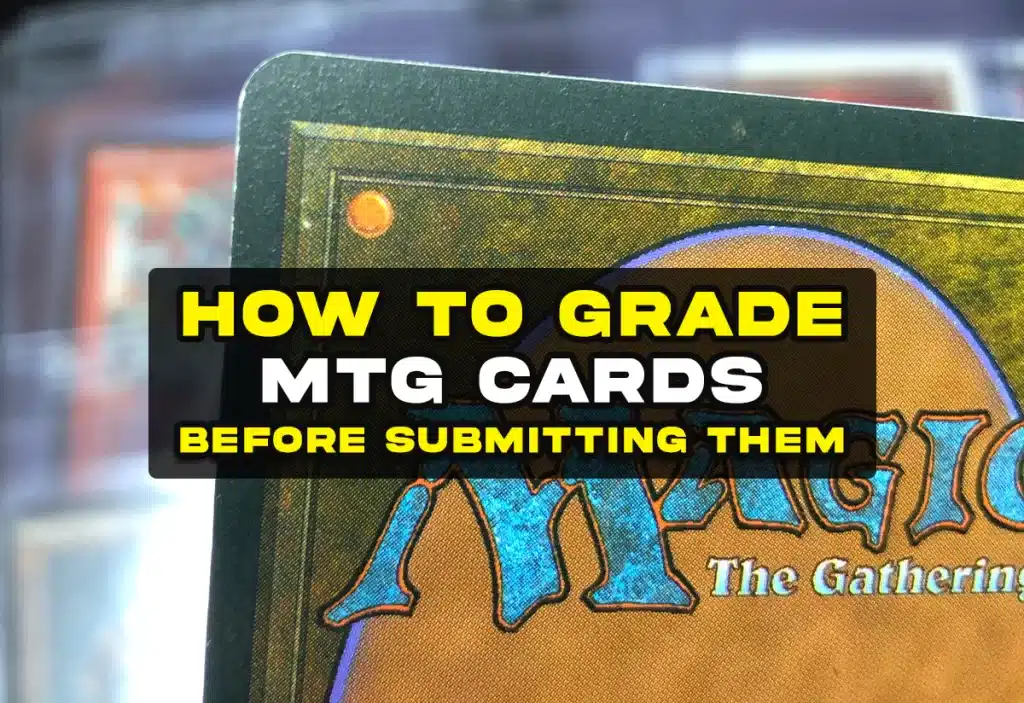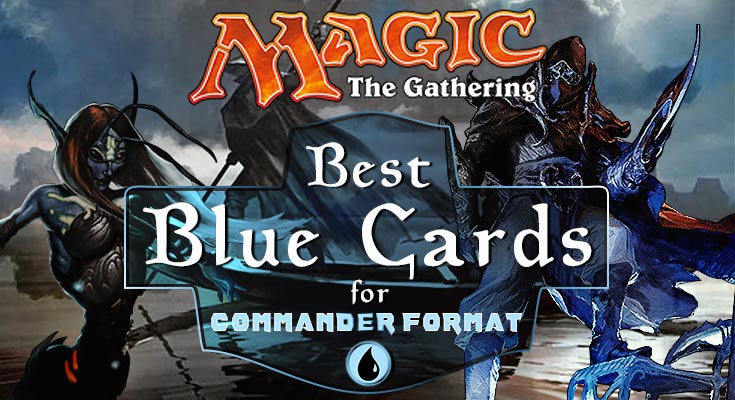Grading Magic the Gathering (MTG) Cards
Magic the Gathering (MTG) cards have become highly collectible items, with some cards fetching substantial prices in the market. For collectors and enthusiasts, grading these cards before sending them to professional services like Beckett Grading Services (BGS) is crucial. This article provides insights into the grading process, helping you understand what to look for when grading MTG cards.
Why Grade MTG Cards?
Grading Magic the Gathering cards can significantly increase their value and collectibility. Accurate grading ensures that you don’t waste money by submitting low-grade cards for costly professional grading. Check out the best third-party grading companies to submit your Magic the Gathering cards to.
Understanding the Value of Graded MTG Cards
- Rarity and Edition: Cards from earlier sets like Alpha, Beta, and Unlimited often have higher values when graded due to their rarity and nostalgic value. For instance, cards like the Black Lotus or the Power Nine are incredibly valuable when graded highly.
- Condition Sensitivity: Some cards are known for their condition sensitivity (prone to scratches, edge wear, etc.). Getting these cards graded, especially if they are in good condition, can significantly increase their value.
- Iconic Cards: Iconic cards, regardless of their set, often see a value increase when graded. This includes popular cards like Planeswalkers, legendary creatures, or cards with significant gameplay history.
- Foils and Special Editions: Foil cards, especially from older sets, or special editions like Judge Promos, can fetch high premiums when graded due to their unique appeal and scarcity.
Practical Tips for Self-Grading
- Use strong, directional lighting and magnification tools to identify surface and textural defects. I use this magnifying lamp.
- Handle cards delicately to prevent additional damage.
- Compare your cards with known high-grade examples to develop a better eye for grading.
The Grading Process
Professional grading companies like Beckett Grading assess cards based on centering, corners, edges, and surface. Each aspect receives a sub-grade, contributing to the card’s final grade.
Key Grading Criteria for MTG Cards
- Centering on the front: Centering is crucial. A card that is off-center on any axis will likely not achieve a high grade. Centering issues are immediately noticeable and can significantly lower a card’s grade. When grading Magic the Gathering cards look at the front very carefully for even borders.
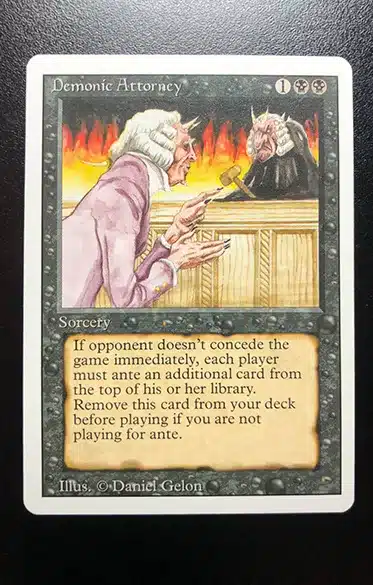
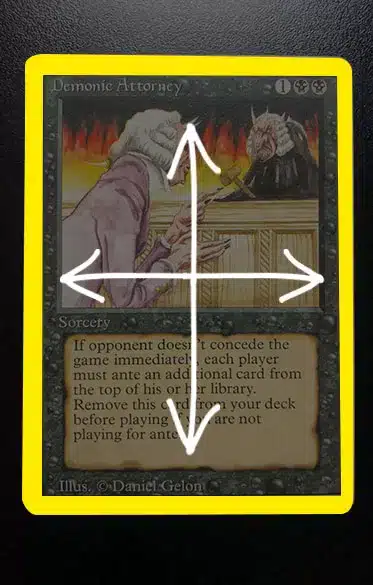
- Centering on the back: The back of the card is just as important so check both sides thoroughly.
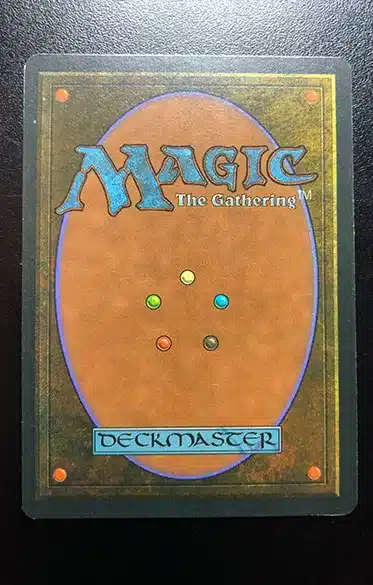
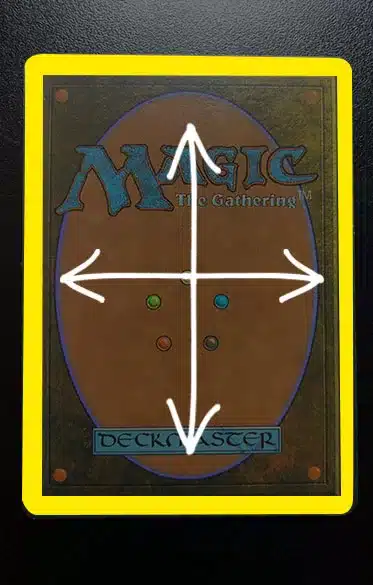
- Surface Condition: Scratches, scuffs, and other imperfections on a card’s surface can drastically affect its grade. It’s important to scrutinize the card under good lighting to catch these flaws. Use a magnifying lamp with a LED light for the best results. Hold the card at an angle and allow the light to scroll up and down the card surface to find any imperfections as shown below.
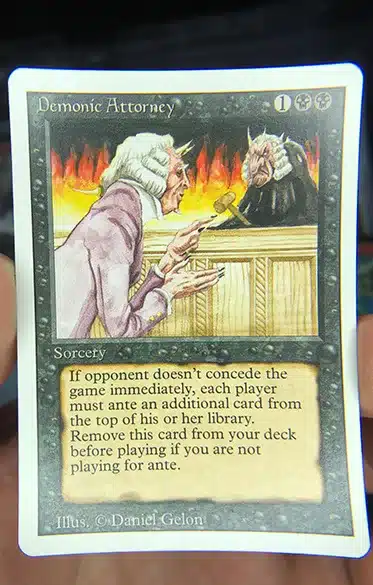
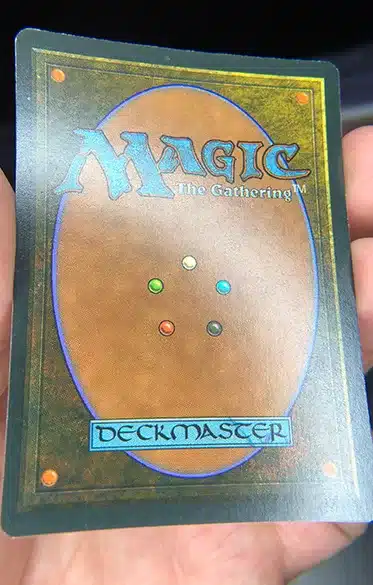
Edges and Corners: The condition of the edges and corners is another major factor. Any wear, nicks, or whitening can lower the grade. Using a dark background can help in identifying these issues more clearly.
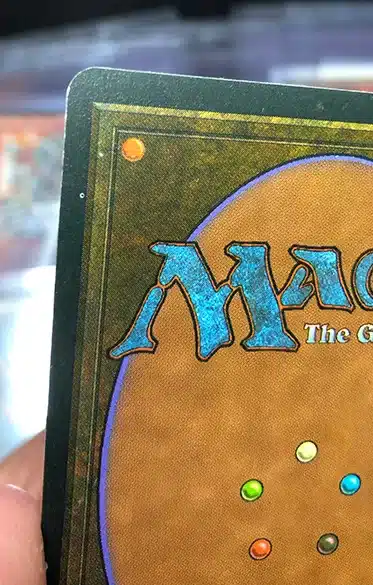

Additional Factors: Miscuts, print defects, and other anomalies also play a role when grading Magic the Gathering cards. Such issues can categorize a card as a misprint or miscut, affecting its grading.
Best MTG Cards to Get Graded
- High-Value Cards: It’s generally a good idea to grade cards that are already valuable. A high-grade can significantly increase their market value. Here is a list of the most valuable MTG cards.
- Mint or Near Mint Condition Cards: Cards in mint or near mint condition are ideal candidates for grading. Even a small blemish can significantly lower the grade, so the better the condition, the higher the potential grade.
- Vintage and Legacy Staples: Cards that are staples in Vintage and Legacy formats, like Dual Lands, often hold significant value and are excellent grading candidates.
- Collectible and Limited Edition Sets: Cards from limited edition sets or those with unique art or features are often sought after by collectors when graded.
Tips for Collectors and Investors
- Market Research: Stay updated with the latest trends in the MTG market. Websites like TCGPlayer, eBay, and MTGStocks can provide valuable insights into card values and trends.
- Grading Standards: Familiarize yourself with the grading standards of different companies. Each has its criteria, and understanding these can help you estimate the potential grade of your cards.
- Invest in Protection: Before getting a card graded, ensure it’s well-protected. Use sleeves and card protectors to maintain its condition.
- Diversify Your Portfolio: While high-value cards are great, diversifying your collection with a mix of iconic, vintage, and special edition cards can be a sound strategy.
- Consider the Cost of Grading: Remember, grading isn’t free. Weigh the cost of grading against the potential increase in value.
Conclusion
Understanding the proper way for grading Magic the Gathering cards is a valuable skill for any collector. Not only does it help in making informed decisions about submissions to grading services, but it also aids in maintaining the value and preservation of a collection.
From a young age, Matt dove deep into sports card valuation, turning to esteemed price guides like Beckett and Tuff Stuff. Eventually he extended to Pokémon, Magic: The Gathering, and Yu-Gi-Oh!. With a vision to sustain and nurture the hobby he loved, Matt established the ‘Graded Card Investor’ YouTube channel and website. He aims to foster a healthy community and offer invaluable insights to those entering the world of sports cards and TCGs. His depth of understanding, from the card market’s 2020 pinnacle to its 1990s valleys, is consistently fortified by meticulous research.
